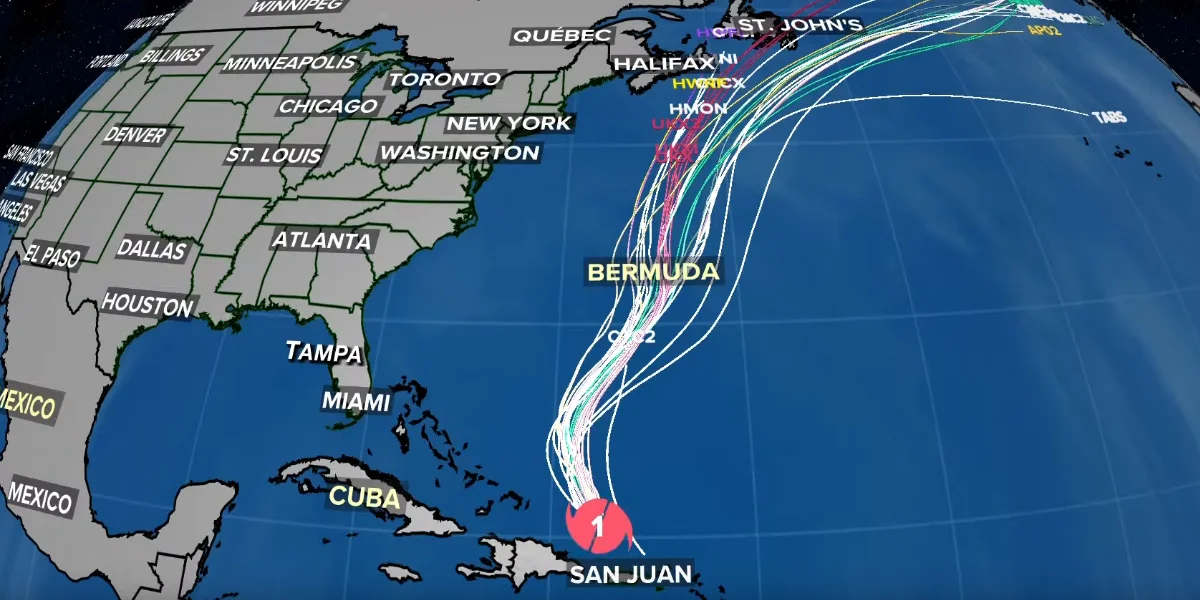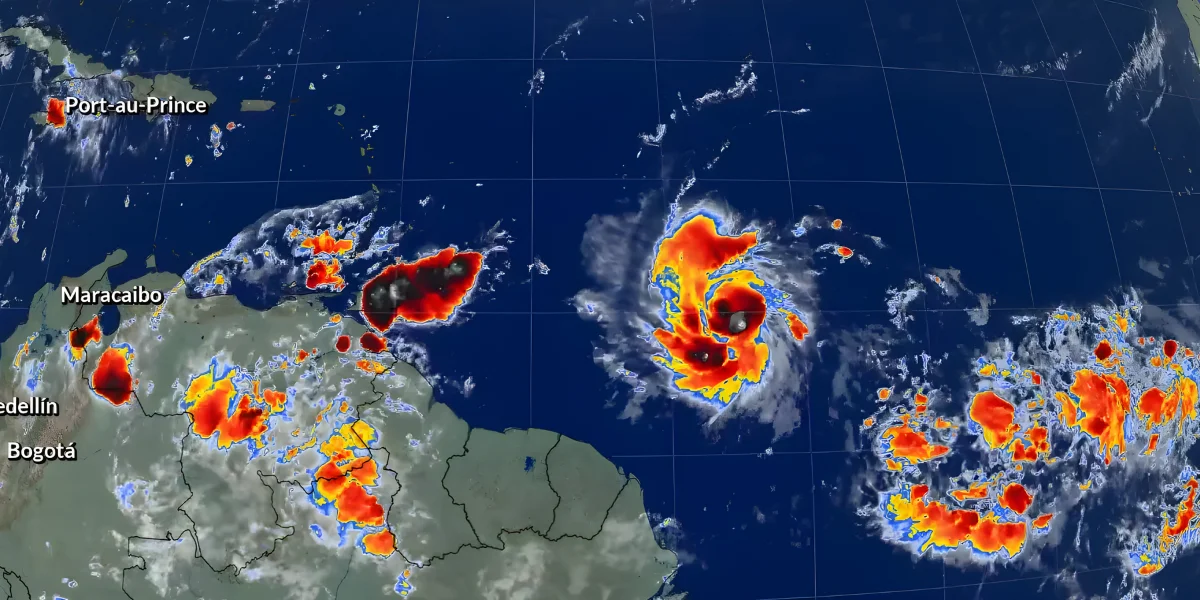Ernesto intensifies into a Category 1 hurricane

Hurricane Ernesto is on its way to Bermuda after causing hundreds of thousands of people to lose power in Puerto Rico and the Virgin Islands as a tropical storm. Ernesto developed into a hurricane Wednesday morning, according to the National Hurricane Center, and is churning with 75 mph winds, with forecasts expecting it to grow further in the coming days.
Only a few days had passed since Debby, a Category 1 hurricane that turned tropical storm, ended her journey along the U.S. East Coast, leaving at least eight people dead—including children.
The National Hurricane Center reports that as of 2 p.m. EDT, the Category 1 hurricane's maximum sustained winds were 75 mph. It passed over the Virgin Islands on Tuesday and then skirted Puerto Rico, with its center located more than 200 miles northwest of San Juan, Puerto Rico, on Wednesday afternoon.
Strong gusts gusted over 74 mph, hurricane-force, in Puerto Rico and the US Virgin Islands, far from the storm's center.
As a result, according to LUMA Energy, the private firm in charge of the transmission and distribution of power in Puerto Rico, more than 700,000 people—roughly half of all customers on the island—were without power on Wednesday. In a few of hours on Wednesday morning, there were twice as many outages.
With a current speed of roughly 16 mph, Ernesto is predicted to get stronger over the next few days. When a storm hits Category 3, meaning its winds reach 111 mph or more, it is considered a significant hurricane, according to the hurricane center's earlier morning prediction.
"On the forecast track," the Miami-based hurricane center said in its latest update, "the center of Ernesto will continue to move away from Puerto Rico today, move across the western Atlantic during the next few days, and approach Bermuda Friday and Saturday."
As of Wednesday afternoon, the storm's trailing bands of storms had dumped about half a foot of rain on Puerto Rico, with flash floods expected, particularly in the island's eastern and southern regions as well as in the Virgin Islands.
Puerto Rico was still under several flash flood warnings as of Wednesday afternoon.
The island's water authority reports that heavy rains and flooding in Puerto Rico caused many rivers to overflow and partially or completely stopped the filtration of water at several water treatment facilities.
Early on Wednesday afternoon, the island's emergency portal system reported that over 120,000 water customers—roughly 10% of all customers—were left without access to drinking water due to these disruptions.
Ernesto, despite a track somewhere over the open Atlantic, will have significant effects later this week and this weekend.
Until early next week, the US East Coast, the Bahamas, and sections of the Caribbean may see deadly rip currents due to the storm, which will churn up seas hundreds of miles away.
On Tuesday, President Joe Biden signed an emergency proclamation for Puerto Rico, allowing the Federal Emergency Management Agency to begin distributing supplies.
Manuel Laboy, executive director of Puerto Rico's Office of Recovery, Reconstruction, and Resilience, stated in a press conference on Wednesday afternoon that FEMA is prepared to supply generators and make warehouses with emergency supplies available as part of their emergency response during the immediate aftermath of the storm.




